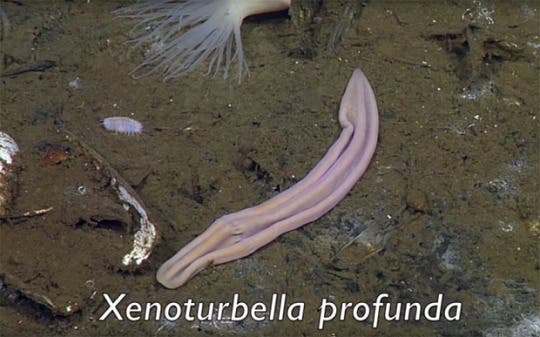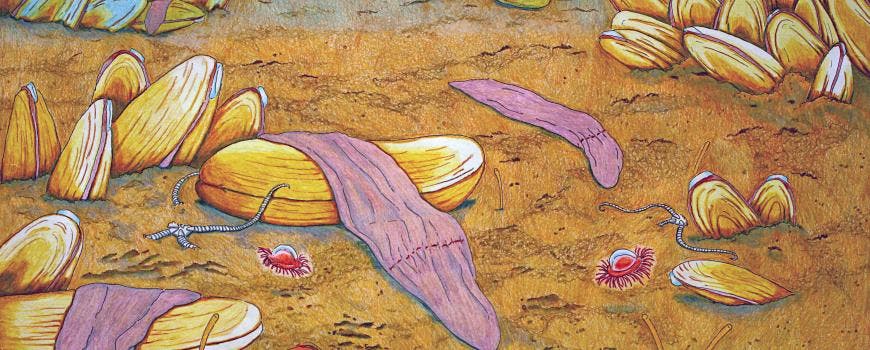
These bizarre creatures are called Xenoturbella, and can be found at the bottom of the ocean. For years scientists have being trying to figure out which proverbial foot these fit in. Now, it seems like their place in the tree of life has been established. Not surprisingly, these are found near the base of the tree of bilaterally symmetrical animals. A fancy way of saying one half matches the other half. That’s at least one thing these deep-sea sock creatures have in common with humans.
Xenoturbella was first discovered 60 years ago off the coast of Sweden, and ever since no one really knew what to make of them. Were these flatworms or some kind of simple molluscs? Are these some primitive animals that stayed this way for eons or did they descend from a more sophisticated creature but shed some features?
There was no way to tell until four new species were discovered in the Pacific by a team from the Scripps Institution of Oceanography, U.S. These include Xenoturbella monstrosa, which seems the largest of the bunch, with one specimen measuring 20-cm long. Then there’s Xenoturbella churro, named so after the sweet, fried Spanish pastry with which it shares an uncanny resemblance. “Our nickname for them was purple socks.So if you think of a sock that you have taken off and thrown on the floor – they literally look like that. Or a deflated balloon,” said Prof Greg Rouse, from the Scripps Institution of Oceanography in the US.

The animal even behaves like a sock. It has no eyes, no intestines, no brain. Just one mouth through which food enters and waste exits the same way. I mean, that’s what scientists assume since no one has ever seen this animal feed in the wild yet.
“They just have a tiny little mouth opening. They don’t have teeth, they don’t have any sucking proboscis structure that could tear off a piece of some bivalve,” said said Prof Rouse. “It is a great unsolved mystery as to how Xenoturbella eats.”
“I have a feeling this is the beginning of a lot more discoveries of these animals around the world,” said Rouse.
Findings appeared in Nature.






